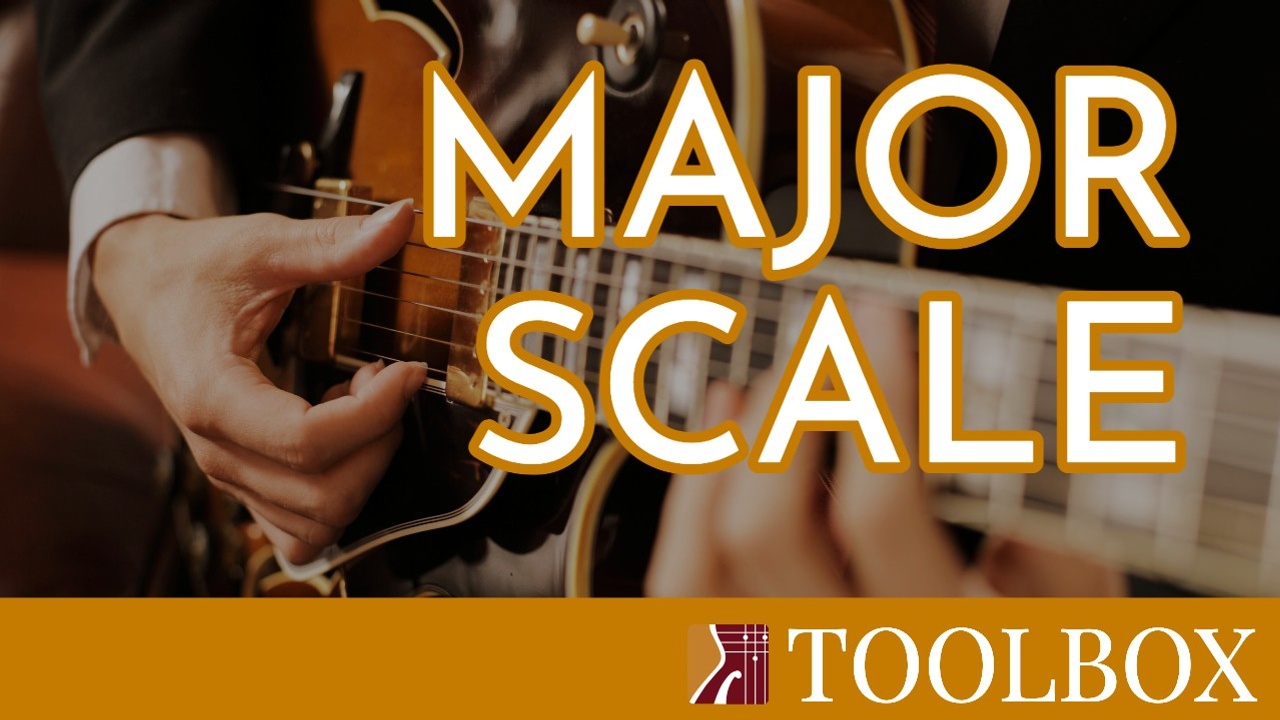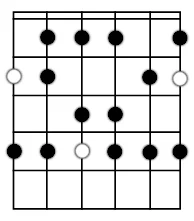
Jazz Guitar Toolbox 1.1 - The Major Scale
Feb 13, 2020
What are the essential skills (or tools) every jazz guitarist should have? We'll attempt to answer this question over the course of this series, Jazz Guitar Toolbox.
The goal of this series is to lower the barrier of entry into the world of jazz guitar by giving you all the tools you'll need to play standards and beyond.
Some of this stuff might seem basic but remember - you can't build on a rocky foundation!
This first lesson is all about the major scale. I'll show you how to play it, how to practice it in an effective way for jazz guitar, and then explain the theory behind it.
Download your "Jazz Guitar Toolbox 1.1 - The Major Scale"
Join our Community here.
1. Basic Moveable Fingerings
First up, you're going to need a couple of moveable fingerings. In this lesson I'm going to cover two:
- one with the root on the sixth string
- and one with the root on the fifth string
Here's is the first fingering, with the root on the sixth string:

The roots of the scale are indicated in white. So that means if you need to play a C major scale, just use this shape starting from a C note.
This will also help you learn the names of the notes on the higher strings if you're unfamiliar.
You might be wondering, why is there an extra note at the end? Shouldn't the scale end on the root?
The reason for this is that you'll be improvising with this pattern, and it's just another note that's fair game. So we might as well practice it!
Now here's the second fingering, with the root on the fifth string:

You'll have to shift positions in when practicing this one - be sure to start with your index finger when you get to the 2nd string.
There are many more scale patterns that exist, but if you're just starting out, then this will go quite a long way.
2. How To Practice These Scale Patterns
Now that you've learned the shapes let's talk about how to practice these effectively.
I'll make it simple: here is an actual step-by-step routine that you can do each day until you're feeling really confident.
1. Long tones: Ascend and descend at 40bpm (or slower), one note per click. Focus on your sound, and your left hand technique. Bonus: say the note names out loud!
2. Eighth notes: Ascend and descend between 60-100bpm and play eighth notes. Practice swung, then straight eighths.
3. Thirds: Ascend and descend through the scale by playing diatonic thirds:
4. Improvise: Put a metronome on beats 2&4 and improvise lines. Try to sing in your head or even out loud, and reproduce it on your guitar.
At first, just do this in C major. Learn C like the back of your hand!
Then, move on to different keys, one per day. Here is an order of keys that you can follow:
C
G
D
A
E
B
F#
Db
Ab
Eb
Bb
F
I recommend using this order rather than, practicing the different keys chromatically (going up one fret at a time). It mixes things up more, and allows you to learn each key independent of one another.
Download your "Jazz Guitar Toolbox 1.1 - The Major Scale"
Join our Community here.
3. Theory Behind The Scale
I've always thought that it's much easier to understand something in music after you've done it in real life - that's why I've saved this section for last.
The simplest way to think of a major scale is as a formula of whole steps and half steps. Whole step = 2 frets, half step = 1 fret.
A major scale is: W W H W W W H
Now that you understand the formula, try to slowly work towards memorizing the notes in each major scale.
This may seem like a impossibly long task, but it can be done by:
- saying the names of the notes during the practice routines above
- quizzing yourself with Q-cards
- writing out the major scales by rote
Or if you prefer to focus on one thing at a time.... spend a long time with each major scale. There are 12 months in a year, there are 12 different keys. Hint hint! 🤔
Here is an answer "key" you might find useful:
- C major: C D E F G A B
- G major: G A B C D E F#
- D major: D E F# G A B C#
- A major: A B C# D E F# G#
- E major: E F# G# A B C# D#
- B major: B C# D# E F# G# A#
- F# major: F# G# A# B C# D# E#
- Db major: Db Eb F Gb Ab Bb C
- Ab major: Ab Bb C Db Eb F G
- Eb major: Eb F G Ab Bb C D
- Bb major: Bb C D Eb F G A
- F major: F G A Bb C D E









